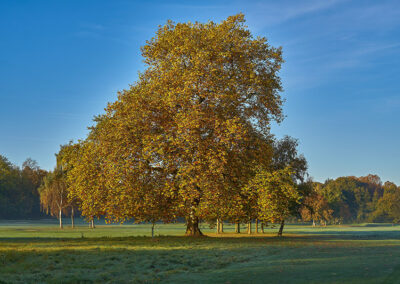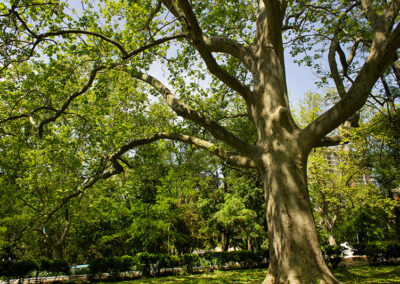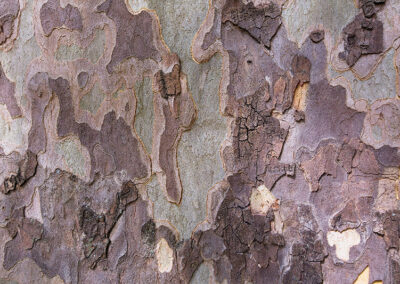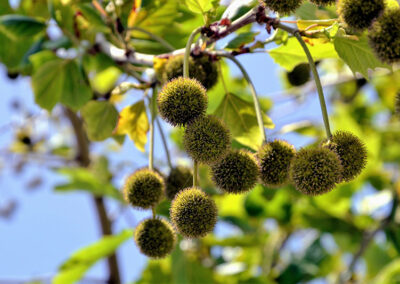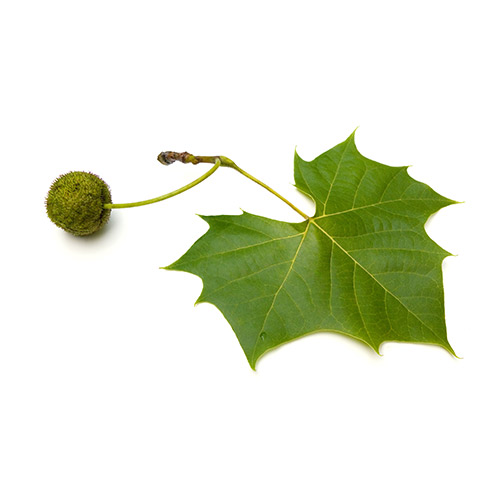
American Sycamore

Pollen Type: Tree
Cross-Reactivity: Other Sycamores
HS Allergy Extract: Sycamore, American
Family: Platanaceae
Genus/Species: Platanus occidentalis
Common Names: Sycamore, Buttonwood, Buttonball, Plane Tree
Distribution: Maine to Central Florida, westward to Minnesota, Nebraska, Oklahoma and Texas. Cultivated throughout most of the United States, especially the eastern states and eastern Texas.
Locations: Along streams, wetlands, shallow swamps, sloughs, very wet river bottoms, and bottomland forests. Sometimes planted in urban areas as a street tree.
Pollinating Period: April & May
Pollination Method: Wind-pollinated
Description: American Sycamore is a native, deciduous tree with an irregularly shaped crown. At maturity, it ranges from 60′-120′ with diameters ranging from 2′-6’+, making it one of the tallest trees in eastern deciduous forests. Its distinctive bark is mottled and flakes off in large irregular pieces, leaving the surface a spotted gray, greenish-white, and brown. Its leaves are 4″-10″ long and are often as wide, or wider, as they are long. They have a slightly folded or drooping appearance and have large-toothed edges. Its brown buds are smooth and only visible in the winter. American sycamores are monoecious, meaning they have separate male and female flowers on the same plant. Male flowers are reddish; female flowers are green. The brown-colored fruit is ball-shaped, 1″-2″ in diameter, and hangs on long pedicels (stems). Fruits ripen from September to October/November and usually remain on the tree over winter, breaking up or falling off the following spring.

